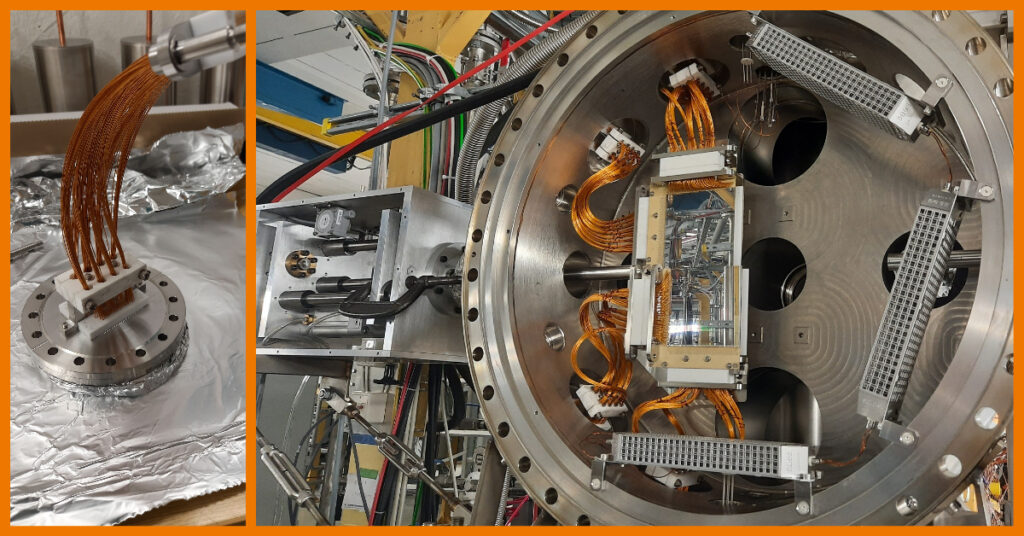The vacuum chamber in the right photo is called CARME (CRYRING Array for Reaction MEasurements). It is a UKRI STFC funded project (ISOL-SRS, PI Prof. PJ Woods, University of Edinburgh), which was vacuum commissioned by the AsTEC division in STFC Daresbury Laboratory (UK), reaching 5E-12 mbar with an empty vessel except for pumps and 8 x 78 way and 2 x 78 way Allectra Sub-D connector flanges fitted.
CARME has been mounted on the XHV storage ring CRYRING at GSI/FAIR (Germany). CRYRING (which has nothing to do with cryogenic) is a unique storage ring world-wide in that it allows radioactive beam produced in GSI/FAIR to be decelerated and stored at the energies at which nuclear reactions occur in stars and other stellar sites (E<10 MeV/u). This makes it a world-unique facility to investigate nuclear reactions of key astrophysical importance. CARME was built to exploit this unique opportunity, and it is the first (and at present the only) array to detect charged particles produced by nuclear reactions induced by the beam stored in CRYRING on the internal CRYRING target.
To store beam and keep it circulating at low energies, CRYRING is kept in XHV (typically 1-2*10^-11 mbar), which requires a careful choice of materials and specially made pumps. The silicon detectors shown in the left photo were built by Micron Semicondutors, and the wires shown are Allectra (301-KAPM-035) Kapton wires, as well as custom made MACOR connectors also produced by Allectra.
The wires coming out of the MACOR connectors are Allectra (301-KAPM-060) and they end up in MACOR strain reliefs, and eventually MACOR plugs manufactured by Allectra. From the detectors to the feedthroughs, we have a total of 300 meters of Kapton wires under XHV – which is a remarkable vacuum load. The feedthrough flanges between XHV and air-side are also made by Allectra (see second photo). Note: the strain reliefs are not engaged in this picture.
Dr Carlo Bruno, (Chancellor’s Fellow at the University of Edinburgh who had a lead role in this project) says ‘The reason for this arrangement is that detectors must move under vacuum. When beam is first inserted into a storage ring it is wide and is cooled and shrunk after a few revolutions. Detectors must be out of the way when beam is first injected, and then move closer to measure at very small angle after beam is cooled. We had to select wires which had good XHV performance, could be moved repeatedly under vacuum without breaking and had appropriate electrical characteristics.’
In order to reach XHV, the entire CARME had to be heated to 130C for several weeks, including the detectors and the Kapton wires. Temperature was monitored using Allectra XHV thermocouples (DN40CF Thermocouple feedthrough Type K). Another key requirement for the wires was the ability to be heated at these temperatures without loss of performance.
Dr Bruno adds ‘We successfully commissioned CARME at the start of this year, and we were able to reach pressures of the order of low 10^-11 – high 10^-12. We also had brief commissioning with beam on target in February 2022, which was very successful. It was the first time nuclear reactions were ever detected at CRYRING. I am very excited for the scientific results we will obtain over the next few years with CARME thanks to the support of my ERC Starting Grant ELDAR.’

